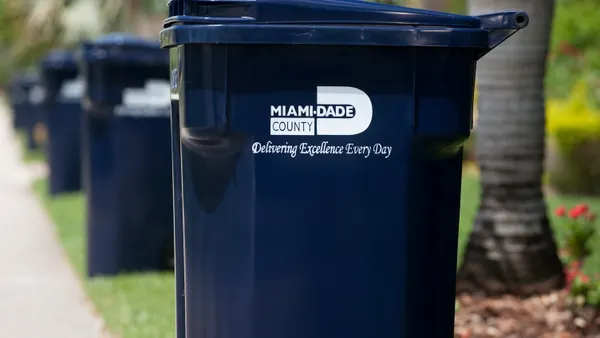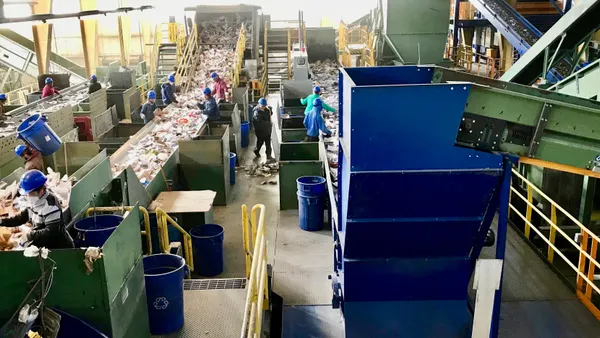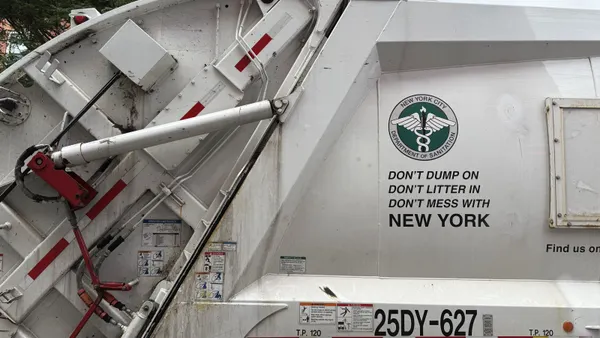The potential uses of food waste for compost or energy have been widely discussed in recent years, but a growing number of experts and activists are now saying that this conversation is missing a key step in the process.
The Reduce and Recover: Save Food for People event, hosted by Harvard Law School, focused almost entirely on the top tiers of the food waste hierarchy which are often glossed over: source reduction and feeding hungry people.
Hundreds of leaders and decision makers from around the country gathered to share ideas on how to keep good food from reaching the compost pile or ideally keep the excess from being produced in the first place. Ideas varied on what kind of policies and programs would best support these goals, but all involved adamantly agreed that the problem can’t be allowed to continue.
"Wasted food is a failure of the system. It’s a societal breakdown of valuable product being thrown away," said Mathy Stanislaus, assistant administrator for the Environmental Protection Agency’s (EPA) Office of Land and Emergency Management. "How do we really make this resonate? How do we really tip this in society?"
The school's Food Law and Policy Clinic (FLPC) organized the two-day event with EPA, the Massachusetts Department of Environmental Protection, and RecyclingWorks as co-sponsors. Since the EPA announced its goal of reducing food waste 50% by 2030 - with a new "Call to Action" posted online this week — this has been an increasingly high priority across all levels of government.
New England states are seen as leaders in this effort and many local professionals were on hand to share their work. Topics ranged in scale from "share tables" for uneaten school cafeteria food, to regional donation networks, to banning organic material from landfills.
In addition to the widely publicized statistic that 40% of food is wasted in the U.S. every year, the event often came back to the fact that 15% of U.S. households are food insecure — meaning they lack reliable access to affordable, nutritious food. Capturing good surplus food at every level from farms to grocery stores is seen as a high priority in tackling waste and a way to reduce more emissions than if the food were composted.
"It’s better to donate than compost," said Ana Carvalho, a city environmental specialist from San Diego, during a presentation. "It makes sense to look at donation as a waste reduction, as a management of a natural resource."
Aside from the logistics of storage and transportation, expiration dates are one of the main barriers to donation. Right now 20 states prohibit the donation of any food that is past its date label, yet manufacturers use a variety of labeling terminology and many items are safe to serve after.
Representative Chellie Pingree of Maine has introduced a bill called the Food Date Labeling Act which would standardize all labels and preempt this patchwork of state laws. Though it’s unlikely that the bill will see any movement during this current session of Congress, Pingree said the fact that it hasn’t generated any partisan controversy is a good sign.
"Waste itself seems to have no constituency in support of it," she said.
Despite these regulatory challenges, many states have still had success with donations. Vermont expects to see the amount of food rescued more than double from the previous fiscal year as part of a new recycling push that includes a landfill ban on organic materials.
Of course even if excess production in the supply chain decreases, donations from food and retail establishments increase, and consumer home waste is reduced, there will still be organic material left to process.
When asked how the waste industry can get more involved in this growing movement to eliminate wasted food, FLPC Director Emily Broad Leib said one of the most important things is to start growing infrastructure.
"There is probably going to be more food supply coming their way soon," she said, adding that the companies who start adapting early will be glad they did in the future.
While many companies have already moved into this space with collection services and processing facilities, there will be room for more in Massachusetts and beyond as organic diversion rates grow.
For those interested in learning more about reduction and recovery, the event’s list of speakers includes many of the field’s top organizations. The EPA is also teaming up with the U.S. Department of Agriculture (USDA) and a large group of other stakeholders to create an online portal with information on all of these projects which will be out by the end of the year. New campaigns such as the National Resources Defense Council’s Save the Food ads are also working to raise awareness on the issue and more of the same can be expected in the future.
Many conference attendees likened this moment in food waste education to where recycling was about 25 years ago — except even more dire. The issue is not going away and as more people learn about it, the urgency to find solutions will only become greater.









